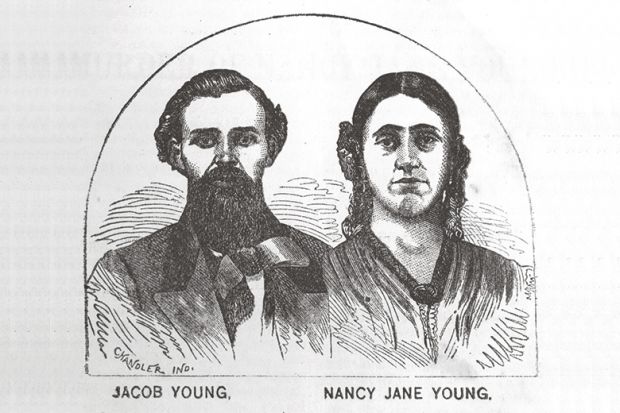If it bleeds, it leads – and that old newspaper truism seems to be the mantra of some US academic publishers. True crime, which often has the whiff of a money-making venture, is being viewed through the prism of social history.
So how do we judge these books? By academic standards, they may be termed positively racy. By true crime standards, they’re often a bit of a plod. In which case, who buys and reads these books, and how valuable are they to scholars?
Wendy Gamber’s The Notorious Mrs. Clem is what may be termed a slow-burner. The dastardly deed is introduced at the start – and then Gamber returns to her fairly sizeable cast, most of whom seem to have nicknames. Confused? You soon will be. By halfway through I was desperate for a cast list.
Reporters are traditionally exhorted to follow the money – and that’s what Gamber does. Banks in the late 19th century were less than reliable, so family and friends often lent money to each other – and charged interest. Things got nasty in 1868 when a Ponzi-type scheme went awry, Jacob and Nancy Jane Young were found dead by a river in Indiana, and the outwardly respectable Mrs Clem became the notorious Mrs Clem. Five trials later, the murder verdict had been challenged more often than we’ve all had hot dinners, and the charge that finally stuck was for perjury after she’d returned to her moneylending ways.
Gamber has a wealth of information, often from the not-always-reliable newspapers of the time (after the fourth trial, The Patriot newspaper trousered money for coverage biased in favour of Clem). And although the blurb on the back of the book teases us with an intriguing cast (an attorney who was later to become president of the US, a “lady reporter” and a dodgy manufacturer of “remedies” for women), most of them are lost amid the minutiae of the trials.
And therein lies one of the book’s problems. You can’t fault Gamber’s research, which is detailed, right down to street plans, but for a case that was supposedly one of the most famous before Lizzie Borden and her axe came along, it’s actually not that captivating, boiling down to a heck of a lot of “she said/a cast of thousands said”.
In the end, a thematic approach might have worked better than a chronological shuffle through the trials and then Clem’s later exploits as a travelling saleswoman for Slavin’s Infallible Female Tonic (there are suggestions that she tried to pass herself off as a doctor). Gamber touches on the issues of courtroom gender, economics, the independence or otherwise of the media (I did enjoy her account of The Sentinel commandeering a railroad locomotive to make sure that it got the story) and racist rhetoric (Clem’s African American servant is referred to as being more fiend than woman). And the book cries out for wider and deeper analysis of the image of the supposed faithful wife – Gamber refers to “an ordinary-looking woman who seized masculine prerogatives”. For the book to work convincingly as social history, it needs less narrative and more context. As true crime, it’s meticulously investigated, but you’ll need to dig for the gems.
Sharon Wheeler is visiting lecturer in media and communications, Coventry University, author of Feature Writing for Journalists (Routledge) and co-editor of Crime Review.
The Notorious Mrs. Clem: Murder and Money in the Gilded Age
By Wendy Gamber
Johns Hopkins University Press, 320pp, £26.00
ISBN 9781421420202
Published 11 November 2016
后记
Print headline: A compelling case falters at trial




